Culture, architecture, art, tales of brave pilgrims reaching their final destination, tapas, wine, merriment and much more. Two days in Santiago de Compostela is like two days in paradise. Shall we?
Some cities are magical and magnetic... Santiago de Compostela is all that and more. This corner of the world is like no other and it manages to captivate even the most pragmatic travellers. Let’s face it – 48 hours in Santiago de Compostela is barely enough, because we’ll want to observe every stone of every street, stop to savour “pulpo a feira” (Galician-style octopus) and a glass of Albariño wine at every bar, explore all the corners, visit the churches and museums. And that would take ages! But if we want to get the most out of Santiago and we have a couple of days, these are the things not to be missed. Fancy flying with Vueling to Lavacolla? Come and discover Santiago de Compostela with us!
Day 1: Art, architecture, tapas and Paris-Dakar
A morning at Praza do Obradoiro
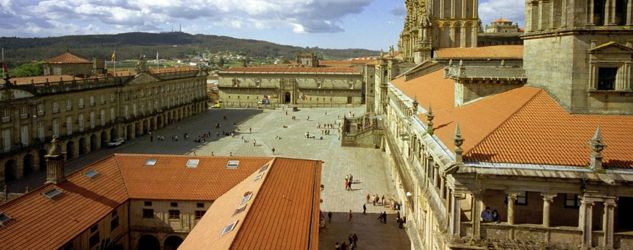
We’ll start off early in Praza do Obradoiro. No matter how early we get there, we’ll always find exhausted pilgrims lying around, resting after experiencing something that we cannot comprehend unless we have walked (or cycled) for miles and miles along the tough path of the Way of St James. If we enter the imposing cathedral, we’ll be able to visit the tomb of St James and see how they swing the “botafumeiro” (a giant thurible). We advise you to book a ticket to see the Portico de la Gloria, the Romanesque cathedral’s west entrance, which is considered to be a supreme work of art.
We can’t leave Praza do Obradoiro without visiting the Hostal de los Reyes Católicos, a stunning building commissioned by Queen Isabella and King Ferdinand in 1499, now converted into a parador hotel. Even if we don’t stay the night or have food there, we can always book a guided tour. Pazo de Fonseca is another amazing building in Praza do Obradoiro, where we find the magnificent Xeral Library, which is chock-a-block with books. We should also spend some time exploring the narrow streets around the cathedral and enjoy the charming squares, like Praza da Inmaculada, de Toural and Platerías. And, why not, enjoy a little midday snack while we’re there.
Paris-Dakar at lunchtime

In Santiago de Compostela there is a curious tapas route that has existed for some years now, called Paris-Dakar. It starts off at a bar called O París, in Porta Faxeira, and finishes at the Dakar, on Rúa do Franco, and the only rule is that you have to start and finish your tapas route the proper way. The route is barely 160 metres long and the tradition is to have a glass of wine and a tapa at each bar. Many people end up drinking too much on this route, in this city known for its university and festive atmosphere! There is no need to stop at all the bars, though, or have a drink in each one, but it is interesting to visit some of them and enjoy their best tapas. The perfect plan would be as follows: a portion of seafood washed down with wine in a mug at O gato negro, xoubiñas at María Castaña, pig’s ear at Orella, squid fried in batter at A Coruña, clams at Mesón 42.
From one church to another
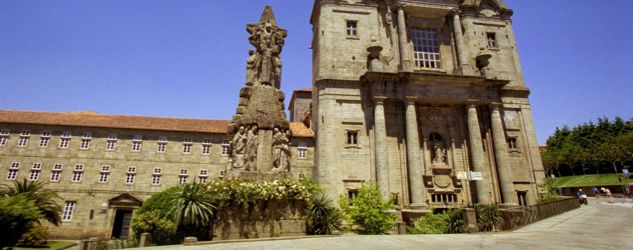
We continue on our journey round Santiago, combining history, art and architecture, which reminds us of the city’s beautiful religious heritage. And it’s still beautiful even if it rains (which happens a lot!). Our first stop can be the Antigo Colexio dos Irlandeses (Former Irish College), a stunning “pazo” situated on Rua Nova. We can only view the façade, but after that we can move on to other important churches in the old town: San Roque, the Convent of San Francisco and the Collegiate Church of Santa María a Real do Sar. The latter is a 12th century Romanesque building that will delight not only history lovers, but anyone who comes to see it!
Sitting at a table at A Tafona de Lucía Freitas
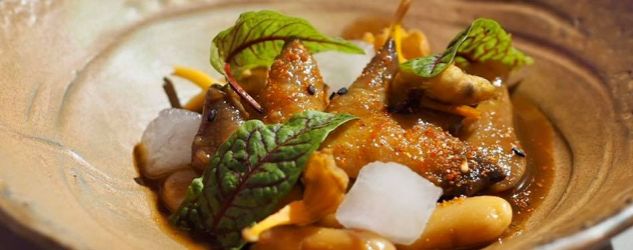
Going for tapas is great, but after a busy day exploring the city we’ll probably feel like sitting down at a table and taking our time to savour the best Galician produce, from the sea and the mountains. A Tafona de Lucía Freitas is a great choice. Excellent Galician cuisine with a lot of seafood, in a cobbled environment bursting with charm and the guarantee of a Michelin star. Make sure you leave some room for dessert – it’s a real treat!
Day 2: Contemporary Santiago
Spend a morning at the CGAC
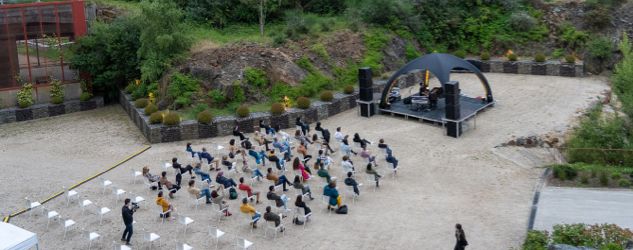
If we visit the Galician Centre of Contemporary Art (CGAC), we’ll discover the vibrant and university side of Santiago that is hidden behind the stones of its narrow, fairy-tale streets. After enjoying some of the contemporary art exhibitions, a good plan is to go up to Gaiás hill, on the outskirts of the city, to the Cidade da Cultura, an ambitious venue with an interesting cultural programme. The building itself is well worth a visit. It’s a good idea to check out what’s on to find something that we like. There are also guided tours.
Lunch at the market: Abastos 2.0
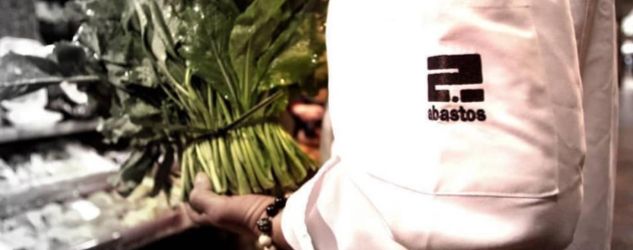
It’s a good idea to book in advance if you want to have lunch at the popular Abastos 2.0, situated in the food market, as it is always packed. And no wonder, because its top quality produce is purchased every day from the market, so we can enjoy the best fish, meat and veg, cooked to perfection, with the knowhow and, why not, cheekiness of chefs Iago Pazos and Marcos Cerqueiro. We recommend booking a seat at the bar.
A stroll around Parque de la Alameda
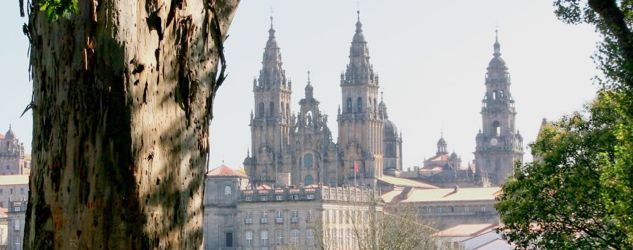
After enjoying our meal at Abastos 2.0, we can head towards Parque de la Alameda, which stands between the old town and the modern part of the city. This lush green park with majestic trees is perfect for an afternoon stroll. Take a photo with the statue of As Marías, and you can even venture into the modern part of the city to discover the most contemporary shops and restaurants. This is a great plan for our last afternoon in the city! We can finish off the evening by enjoying a good meal as we book another flight with Vueling to come back to Santiago!
Dinner at Casa Marcelo
Marcelo Tejedor has become an institution in Santiago, since he opened Casa Marcelo 20 years ago. It’s a restaurant with an informal atmosphere that serves ambitious food. You’ll love the bold (and spot-on) fusion of Japanese and Galician traditions, with hints of Chinese, Peruvian and Mexican cuisines. Seems impossible, doesn’t it? Nothing is impossible at Casa Marcelo!
We haven’t mentioned the gastronomy, or the little squares, the legendary tapas restaurants (especially the famous La Tita omelette!), museums and other attractions that this vibrant and culturally active city has to offer. But that will have to wait until next time. One weekend exploring the city’s narrow streets and we’re hooked! It won’t be long before we’re back in Santiago!







